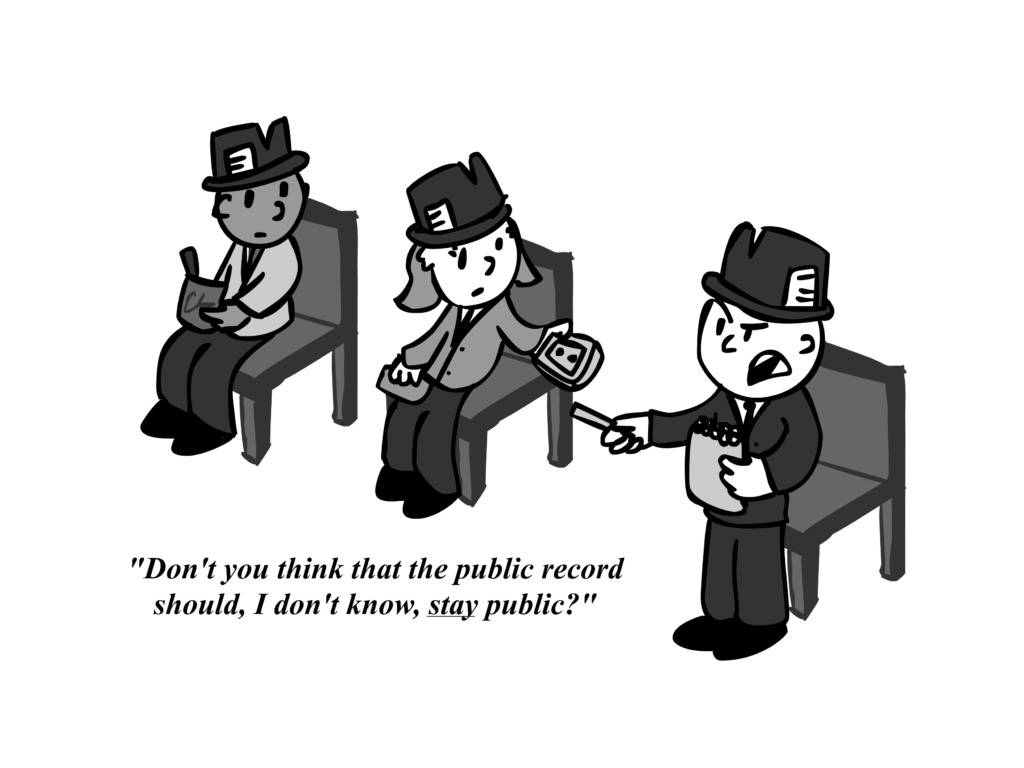It’s eighth grade, and I’m wearing a baggy T-shirt and flare jeans. My hairline is receding from the tight ponytails I subject it to each day, but I’d say the look goes well with my braces and glasses. My assigned locker is right beneath Aaron’s, and today is the best day of my life because he just dropped all of his books on my head. I’m seeing two of him, but who would complain? The more, the merrier.
He asks me if I’m all right; the way he talked to you made you feel like you were the only person in the world.
I say, “Oh, I’m totally fine.”
He walks away, and the only thing I remember about eighth grade is the incessant feeling of “I’m not good enough.”
Now, it’s my first year of graduate school and I’m sipping coffee at the library before my 2:30 p.m. class. I see Aaron on Facebook. He’s exactly the same, besides the fact that his hair is shorter, he’s grown a beard and some height, and he’s the new intern at “CBS This Morning.” And my mind reverts back to eighth grade, saying “Of course that’s not you. He was always going places.”
In defense of my pride, I put up the “Of course, he’s a man” card. Right then, I saw my mistake, the true difference between us. He got the job because he’s likable, empathetic, outgoing, personable and most of all, confident. He networks, he seeks out relationships, he focuses every conversation on other people. When I say “He was always going places,” what I mean is that he had a vision.
It’s not that I’m not happy with where I’m at; it’s that deciding and chasing what I want has never been second nature to me. I never trained myself to have confidence enough to take steps toward my dreams. My dreams? I’ve only been stepping into the next space that opens up.
I was reading an article this week about gender inequalities in the workforce, how a woman who wants to be a leader in the business world must balance her personality perfectly between feminine and masculine characteristics. If that balance is slightly tipped in any direction, she will either be viewed as too weak or too assertive. Either one will cost her respect and effective leadership.
A subversive glass ceiling still exists, a barrier put up instinctively by the human mind. To keep society stable, we have put everyone into a box. And, even when social values have evolved, it takes even longer to transition from traditional mechanics to new ones.
Yes, there are problems for women in the workplace, but the way I see it, the first glass ceiling a woman faces is the one she puts up herself.
Men have no trouble networking because they thrive in competition. Women struggle in the business world because we take hits harder. We feel everything is personal. We see competition as an obstacle rather than fuel, and we see ourselves as our biggest hindrance.
The thing is, women generally don’t see themselves as a viable resource. We are so focused on fixing ourselves in order to be worthy of something rather than just being hungry to learn and accomplish tasks.
We shouldn’t have to put up with inequalities, but we also shouldn’t let another person’s success debilitate us. We should do what we can to fight inequalities in the workforce, but first we need to make sure that when we do fight for them, we are deserving of them because of our mastery, talent, knowledge and most of all, confidence.
Man or woman, when you are presented with a task, you can train yourself to master it. Let’s master confidence, networking, empathy and our own personality.
Ever heard of Sheryl Sandberg? She kind of runs Silicon Valley. She created a new organization for women called Lean In and she wrote a book with the same name. Look up Lean In, the organization and the book. If you like what you find and are interested in helping me establish a Lean In group for Murray State’s campus, contact me: kthompson29@murraystate.edu.
Column by Kaylan Thompson, Graduate student from Murray
































































































